VPA authorising environment, manner of establishment and relevant Ministers
The VPA is a State Government statutory authority established under the VPA Act.
Victoria’s planning system provides the state-wide framework for use, development and protection of land in the interests of all Victorians as articulated in the Planning and Environment Act 1987 (PEA).
Within this system, the VPA leads place-based strategic planning for growth in designated areas. Our focus is on integrated land-use, built form and infrastructure planning outcomes for significant precincts and places in growing Victorian cities, suburbs and regional towns.
Under the VPA Act we have a board of directors responsible for determining the general policies and strategic direction of the VPA, with a clear purpose to provide advice and assistance to the Minister for Planning and, from 22 June 2020, to the Minister for Transport Infrastructure, Minister for Suburban Rail Loop and Minister for Business Precincts.
The VPA is accountable to the Minister for Planning to deliver on the Statement of Expectations, and accompanying Ministerial Direction issued by the Minister to the Authority pursuant to Section 36(1) of the VPA Act. The current Statement of Expectations was issued by the Minister for Planning on 7 April 2019 and sets program-level priorities for the three years 2019/20-2021/22.
The Hon. Richard Wynne MP was the responsible Minister for the period from 1 July 2020 to 30 June 2021.
The VPA has functions and powers under the PEA. The VPA also has responsibilities as an interface body under the Transport Integration Act 2010.
Annual project responsibilities are approved each year by the Minister for Planning via the annual Business Plan and budget.

Report
KEY ACHIEVEMENTS THIS YEAR
a. Fast track: 7 projects finalised of which 3 completed; submitted 4 for decision
b. Streamlining for growth: 22 council allocated projects, totalling $2.7 million
c. PSPs for New Commuities Outer Melbourne: 2 gazetted; unlocking land 8,290 residences, 1,436 business
d. Assisted in planning to unlock approx 20,000 lots in the regions
e. Worked on 15 projects to focus 70% new housing in Established Melbourne
f. Undertook Community Engagement on 5 projects to plan great places

Other highlights over the year included:
Continuing to progress many key projects in regional Victoria and in Melbourne renewal precincts including support for the Suburban Rail Loop.
A new focus on identifying a prioritised and criteria-driven program of high-impact planning projects in established Melbourne, regional cities and peri-urban towns.
Recognition of the new Alternate Delivery pilot program to test this alternate PSP delivery pathway.
Supporting the Victorian Government through delivery of the Unlocking New Communities and Affordable Housing and SFG-funded projects.
Support for a new pre-commencement phase to better classify projects that are undergoing preliminary investigations and discussions.
Ongoing support for better infrastructure coordination and delivery.
Support for our financial sustainability approach.
Investing in the organisation by further developing our approach to hybrid working and flexibility through our Way We Work document, ensuring we remain an employer of choice.
Development of a new Strategic Plan, People & Culture Strategy and IT Strategy which will underpin our Way We Work objectives.
Continuation of our PSP reform package
Support and contribution to planning reform work underway in government.
ACROSS VICTORIA – OUR WORKING LANDSCAPE
The VPA has a statewide remit to operate in designated growth areas around Victoria. Our work program and focus includes programs the Minister for Planning has directed us to develop and manage, as follows:
Transport precincts and business precincts (priority precincts)
Urban renewal in Melbourne
Melbourne growth corridors
Regional cities and towns
Infrastructure planning and coordination (including GAIC)
Streamlining plan delivery
Planning solutions, innovation and partnerships
Organisational capability and capacity.
During 2020/21 we prioritised the VPA Fast Track Program and worked in the designated areas identified through these programs.
VPA FAST TRACK PROGRAM PROGRESS
As part of the Victorian Government’s response to COVID-19, the VPA was charged with the responsibility by the Treasurer and the Minister for Planning to accelerate 19 projects on our existing work program.
The VPA was to unlock economic benefit by identifying already progressed and well-advanced projects through the planning and development pipeline to permit and shovel ready stages.
While operating in a COVID-19 environment has been challenging and impacted on the delivery time for some Fast Track projects, all have a clear pathway for completion.
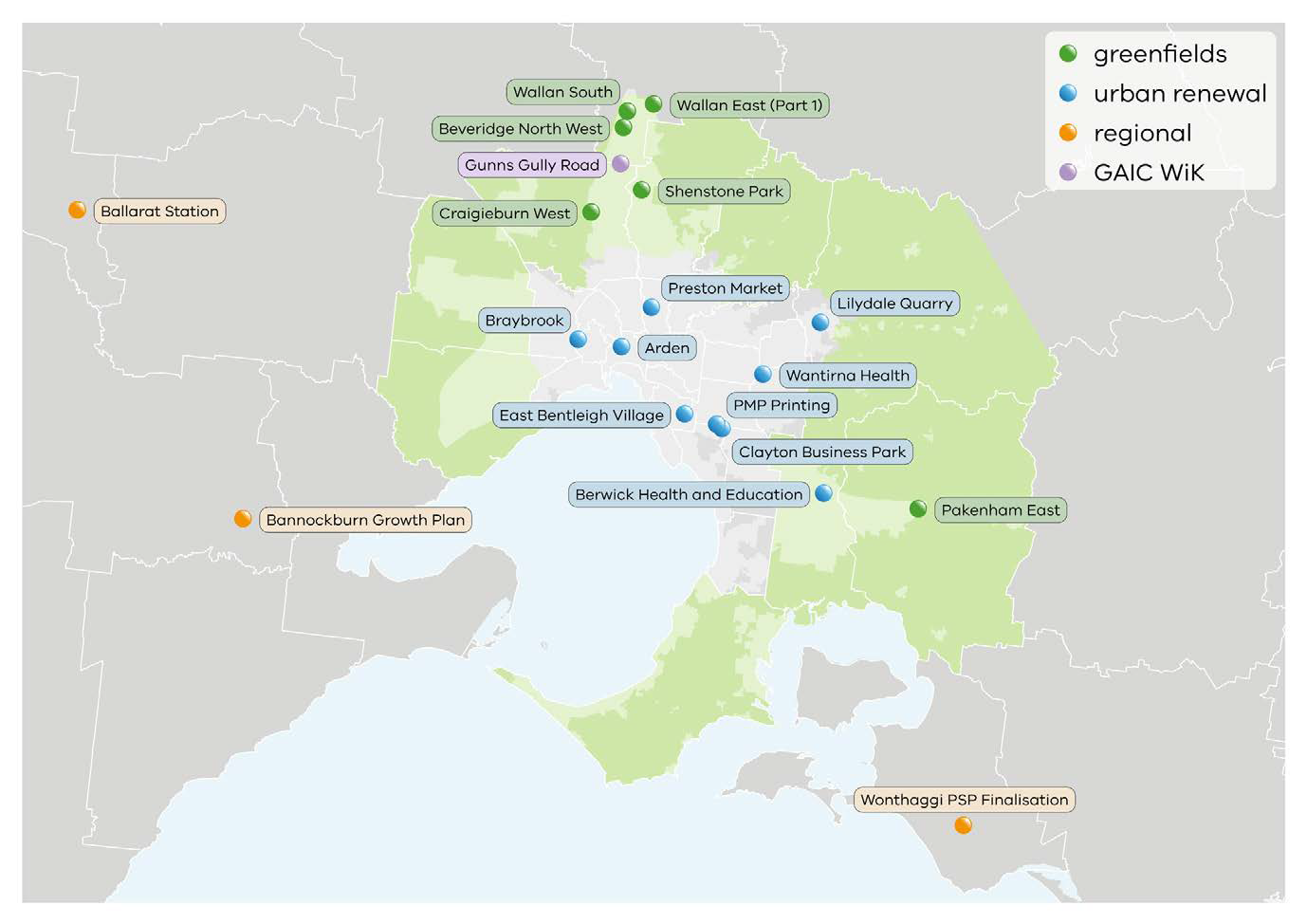
Fast Track Program
It is noted that the Clayton Business Park was part of the original 19 projects on the VPA Fast Track Program. Though this project has been finalised – it was decided that this project will not proceed further at this stage.
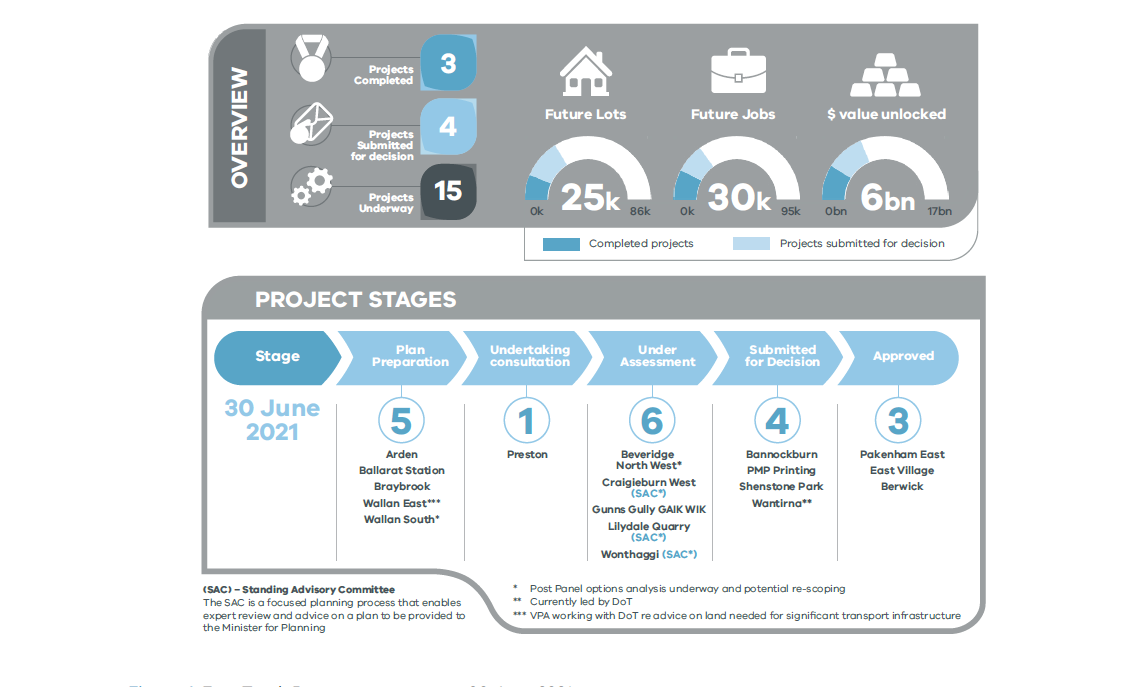
Fast Track Program status as at 30 June 2021
ESTABLISHED MELBOURNE
The VPA’s work contributes to the delivery of local jobs and the Plan Melbourne aspiration for 70 per cent of housing growth to be located in established Melbourne and city-shaping liveability and economic outcomes.
Due to the scale of the challenge of planning for growth in Melbourne, the VPA’s work program in established Melbourne has increasingly focused on planning for growth at the precinct scale (rather than at a site-by-site level).
In 2020/21, focus has been on:
Planning state significant precincts for government
Preparation of planning scheme amendments for urban renewal sites and strategic sites
Other plans and strategic advice
Establishing a forward pipeline and replicable processes

Established Melbourne program (excluding Fast Track projects)
REGIONAL CITIES AND TOWNS
During 2020/21 the impact of the pandemic saw a significant spike in residential demand in the regions, requiring the VPA to refocus on alleviating land supply shortages in high-growth regional cities and periurban towns. As a result the VPA has centered our effort and actions to develop a regional pipeline of projects that responds rapidly to market changes (particularly to meet housing demand in key regional cities), so that we can transparently allocate resources to areas where we can make the highest impact.
The VPA continued working closely with councils and government agencies to provide place-based planning solutions to support urban growth in regional cities and towns. The VPA has been set a target to deliver 30,000 new residential lots and 9,000 new jobs in the regions by 2022.
In Victoria’s peri-urban and regional areas, the VPA supports councils and other stakeholders to achieve growth aspirations by planning for precincts and places. Coordinated planning in these areas will result in a more productive economy for regional Victoria and affordable and attractive places to live.
During the year, the VPA was active in 11 regional projects, with nine additional projects funded through the SFG program. We undertook work to develop a forward Regional Victoria Strategic Pipeline, with a focus on establishing an authorising environment in regional cities and key peri–urban towns, creating a mandated pipeline of projects within a defined boundary, a criteria-driven prioritised annual work program, and ensuring that regional cities and key peri-urban towns have sufficient zoned land ready to be serviced to provide jobs and housing in a post-COVID-19 world.
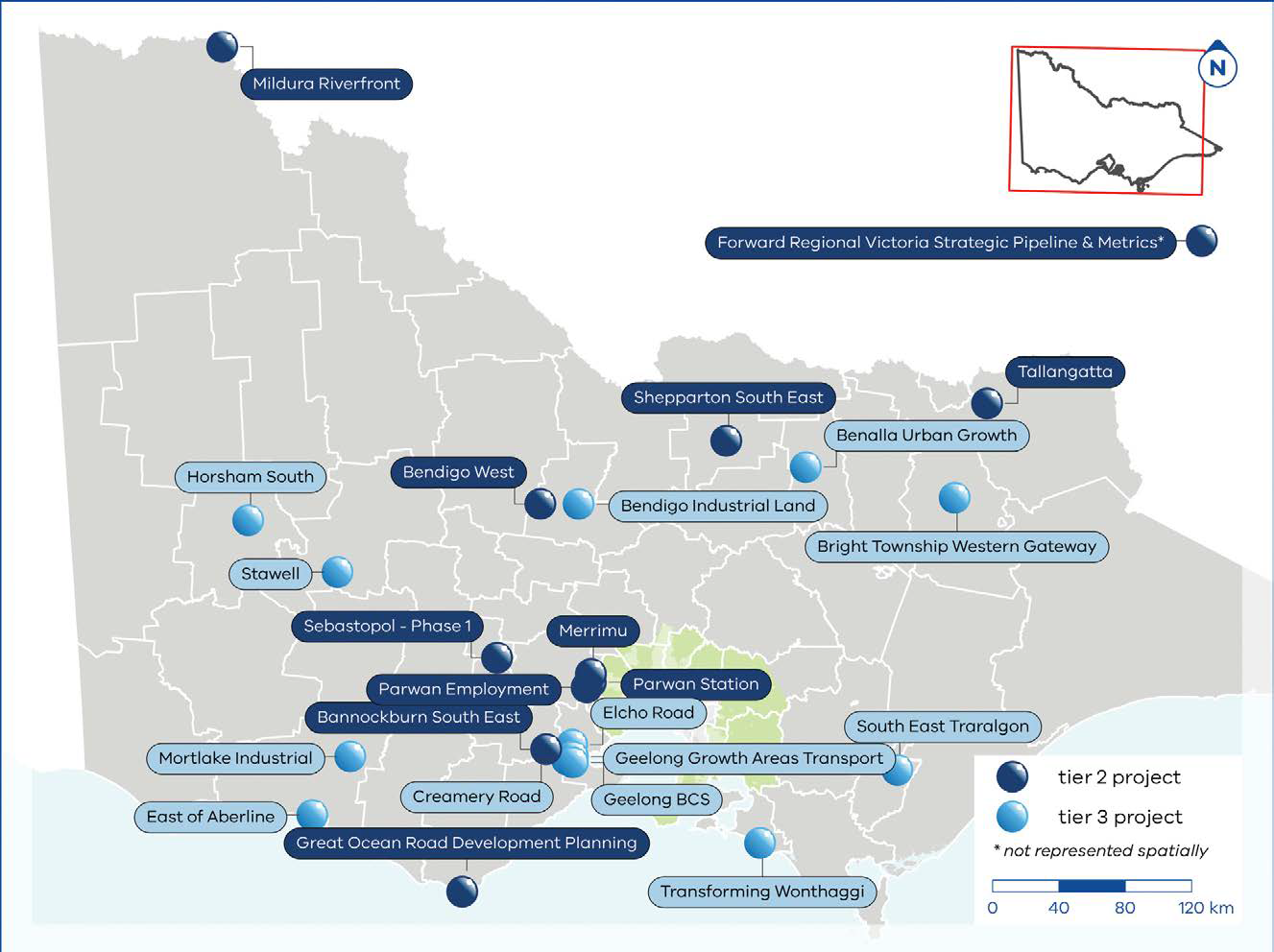
Regional planning program (excluding Fast Track projects)
MELBOURNE’S GROWTH CORRIDORS
The priority for this program continues to be maintaining a 15-year supply of zoned land within Melbourne’s metropolitan growth corridors to help reduce upward pressure on house prices. Importantly, these plans also enable the creation of valuable jobs for the Victorian community
In February 2019, following the completion of the previous 100,000 lots program, the government announced new outer Melbourne planning targets for the VPA for an additional 50,000 residential lots and the capacity for 50,000 new jobs. These are expected to be progressively delivered with the 50,000 lots component targeting completion in early 2023 and the 50,000 jobs component by the end of 2023.
Towards this target, two PSPs were gazetted in 2020/21 being Pakenham East PSP and ICP unlocking 7,229 dwellings and 1436 jobs and Quandong PSP (councilled) unlocking 1,063 dwellings in the Wyndham area.
Further advancing achievement of this target in 2020/21 was the VPA Board’s endorsement of the Shenstone Park PSP to be submitted to the Minister for approval comprising a total of 3,669 dwellings and 4,342 jobs.
The Craigieburn West PSP and ICP also proceeded to final stages during the 2020/21 year in preparation for Board endorsement early in the 2021/22 financial year. A panel decision on Beveridge North West PSP in late 2020 resulted in this project and the adjoining Wallan South PSP being retimed to account for a fresh process addressing the panel recommendation. Work on these two projects was also significantly progressed throughout 2021/22.
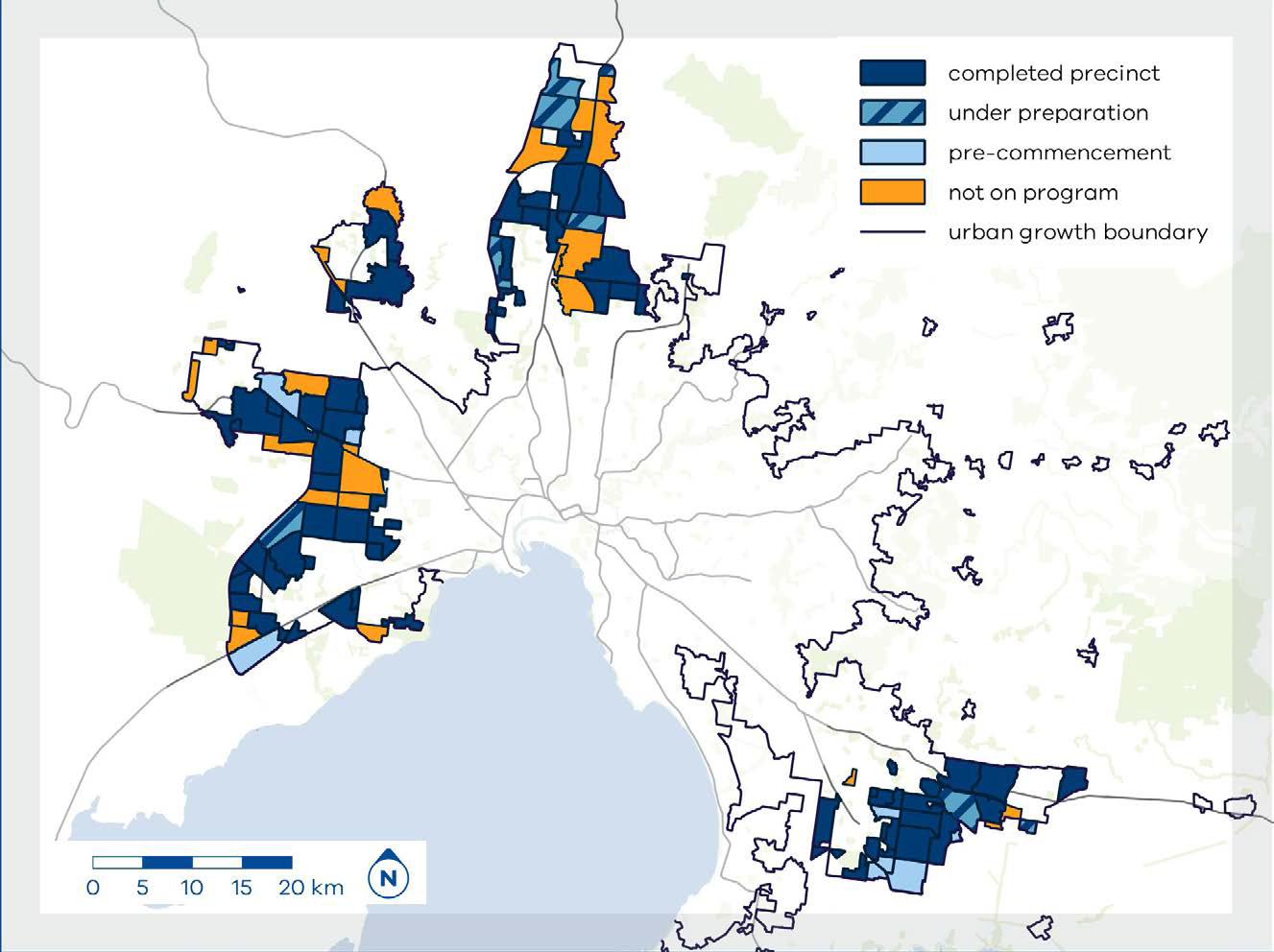
Outer Melbourne planning program – PSPs complete, on program and yet to be programmed
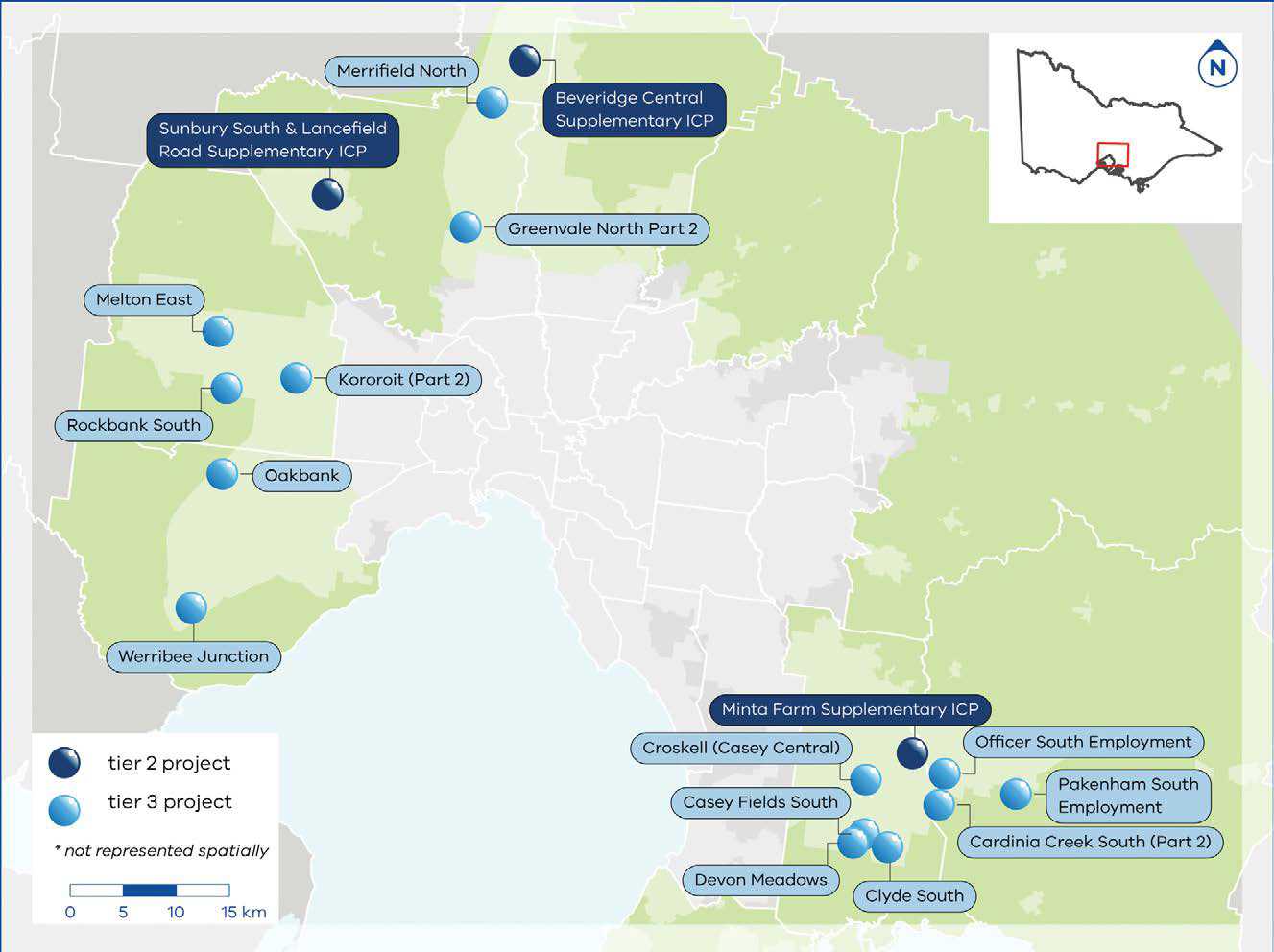
Outer Melbourne planning program (excluding Fast Track projects)
STREAMLINING FOR GROWTH
The SFG Program was established in 2016 to facilitate faster (and more cost-effective) delivery of employment and residential land across Victoria.
The SFG Program focuses on projects that unlock and accelerate the delivery of employment and residential land in areas subject to population growth pressures and/or experiencing shortages of land for housing or jobs. It aligns with the VPA’s core function as the State Government’s lead agency for delivering planning and infrastructure coordination solutions in designated areas across Victoria.
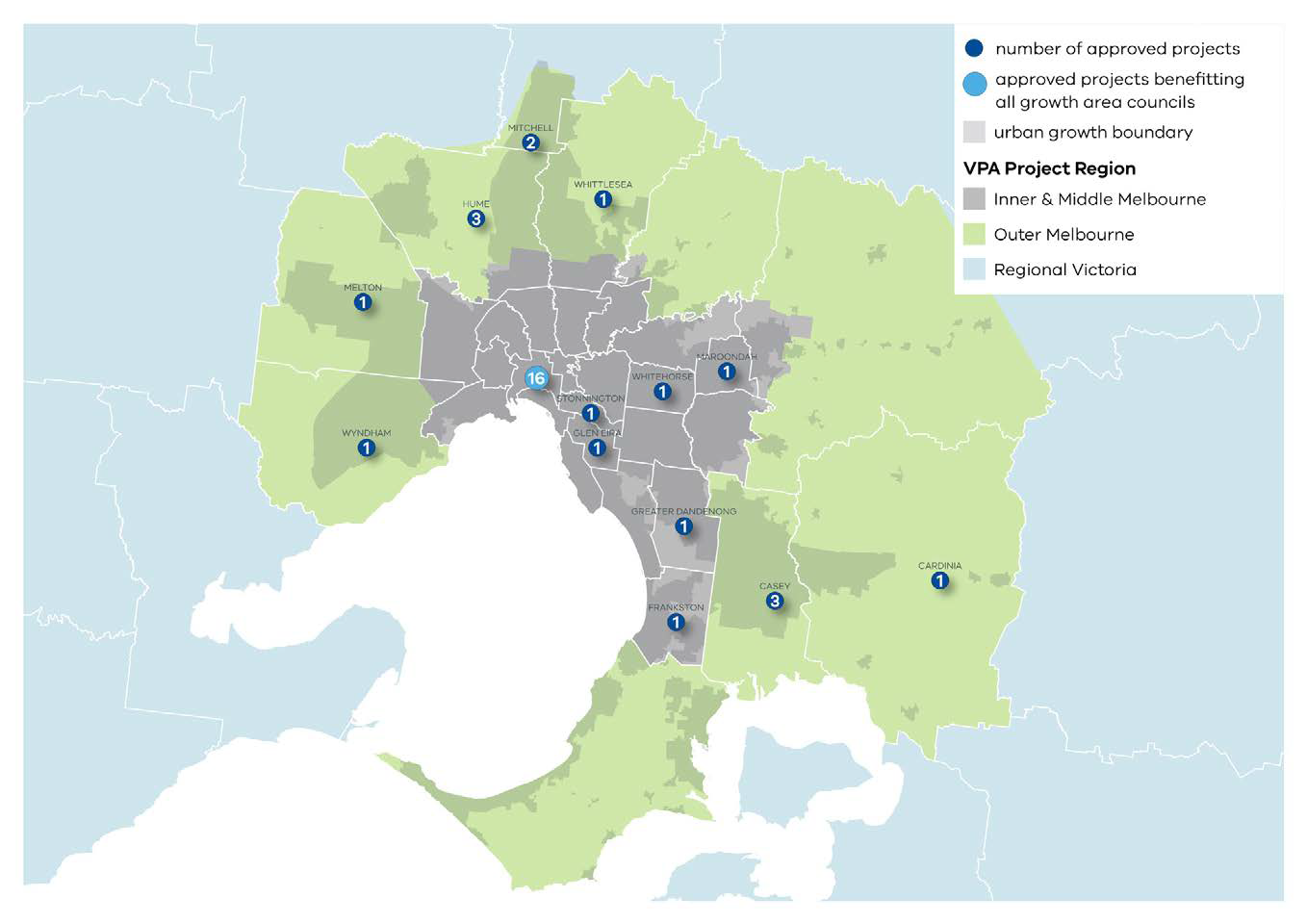
Streamlining for Growth 2020/21 approved projects for metropolitan Melbourne
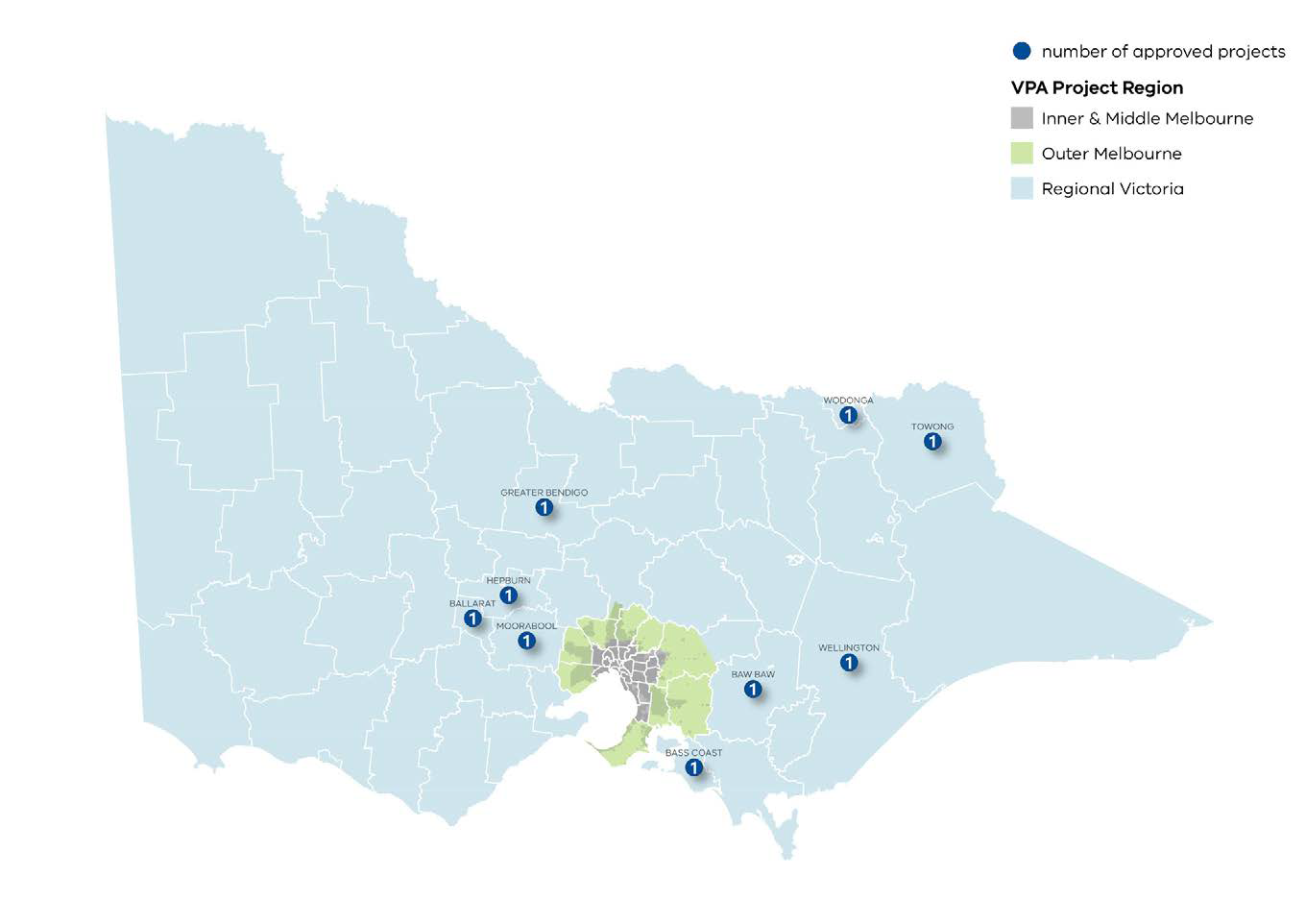
Streamlining for Growth 2020/21 approved projects for regional Victoria
INFRASTRUCTURE COORDINATION
The VPA continues to progress work and advocacy towards greater integration of land use and infrastructure planning and delivery. This is supported by the object in the VPA Act and one of the programs of our Statement of Expectations.
Planning for infrastructure delivery
Planning for the right infrastructure to be delivered at the right time is critical to developing complete communities. The VPA, through its infrastructure contribution plans, makes sure a fair share of infrastructure costs is met by landowners.
The VPA has been active in planning for necessary state infrastructure in Melbourne’s growth areas and for key regional cities and peri-urban towns. The government’s record investment in growth area infrastructure creates an opportunity for the VPA to be proactive in providing information to departments and agencies about the infrastructure needs of the growing communities.
GAIC and GAIC Work-in-Kind (GAIC WIK)
The VPA has finalised negotiation for a total of eight GAIC WIK agreements since GAIC was introduced. This innovation is now proving to be an attractive alternative for landowners with GAIC liabilities. Over the course of 2020/21 there were a number of potential agreements being discussed with landowners and their representatives with two to be finalised in the 2021/22 year.

GAIC WIK agreements as at June 2021
ORGANISATIONAL CAPACITY AND FINANCIAL SUSTAINABILITY
The VPA’s financial sustainability strategy aims to transition over five years to a three-stream funding base to address the sustainability issues that exist with the VPA’s current funding model. The strategy includes a greater focus on the revenue source comprising a broad-based cost recovery model and reflecting a diminishing reliance on voluntary thirdparty contributions.
The VPA has been successful in securing a legislative change to enable partial cost recovery through an ICP/DCP. Advocating for a broad based funding model is the next part of this strategy.
To this end the VPA is proposing to diversify its revenue sources over time and to recover planning costs from benefiting landowners. We are also undertaking negotiated service commissions from government agencies.
